



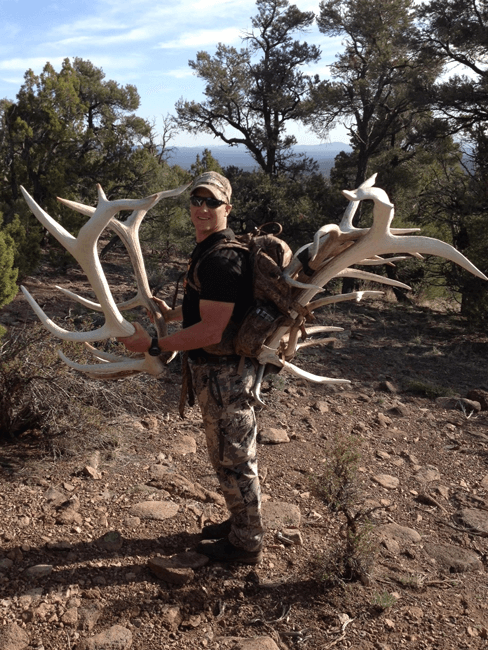
Photo credit: Kody Smith

Photo credit: Shane Kreitzer
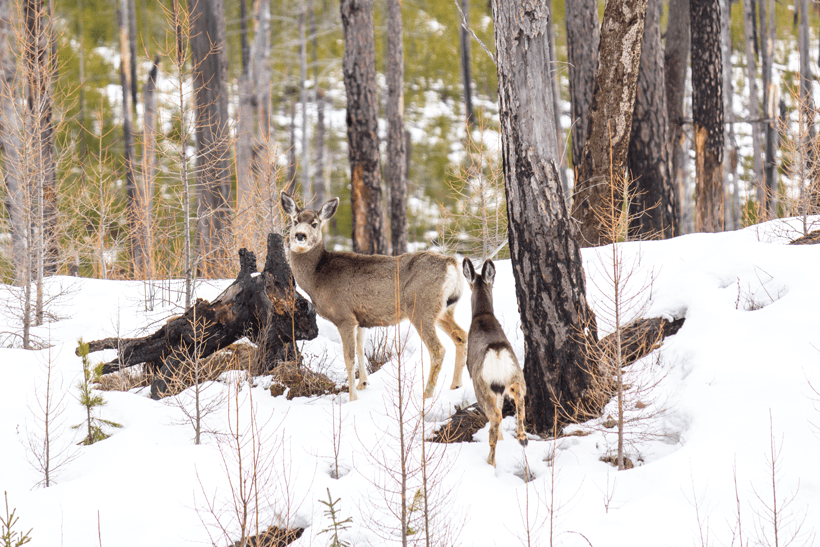
Photo credti: Brady Miller
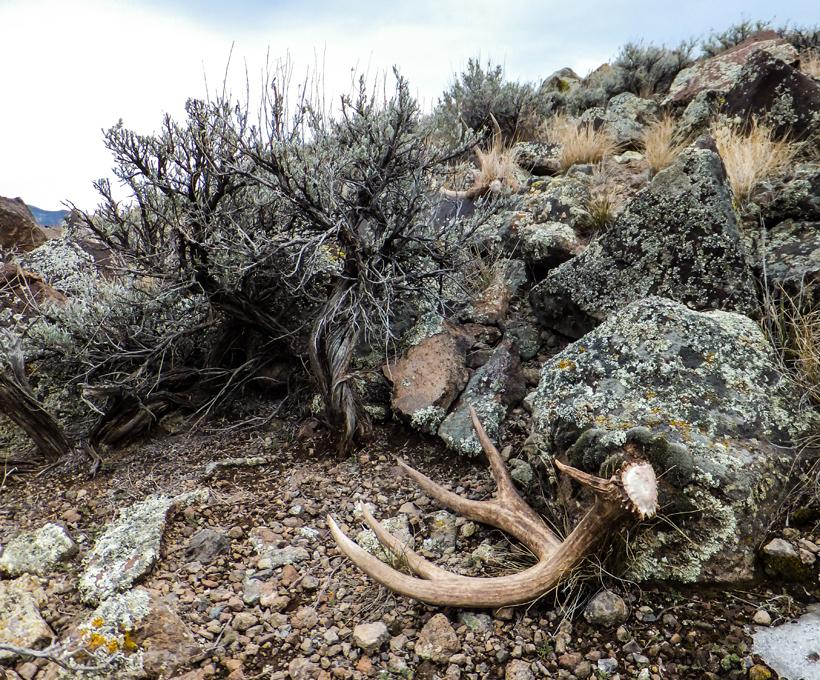
Photo credit: Shane Kreitzer

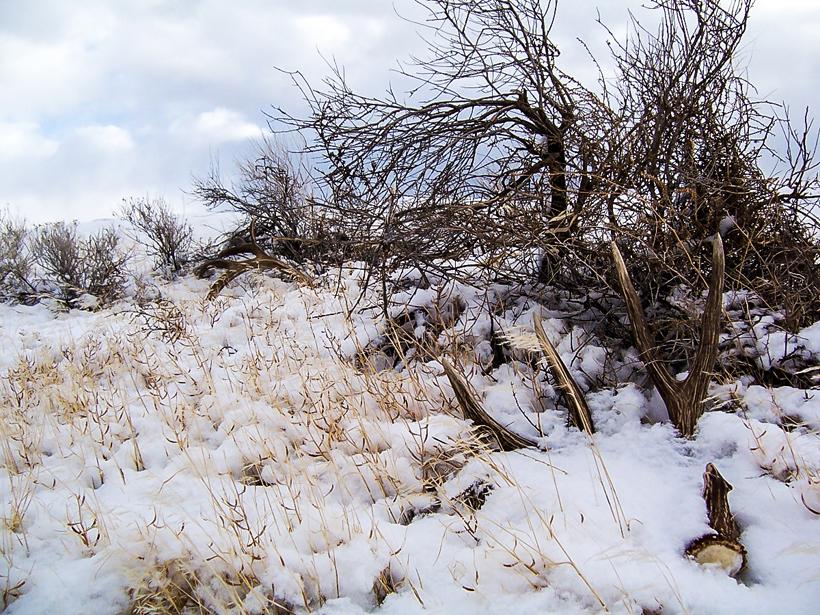
Photo credit: Shane Kreitzer
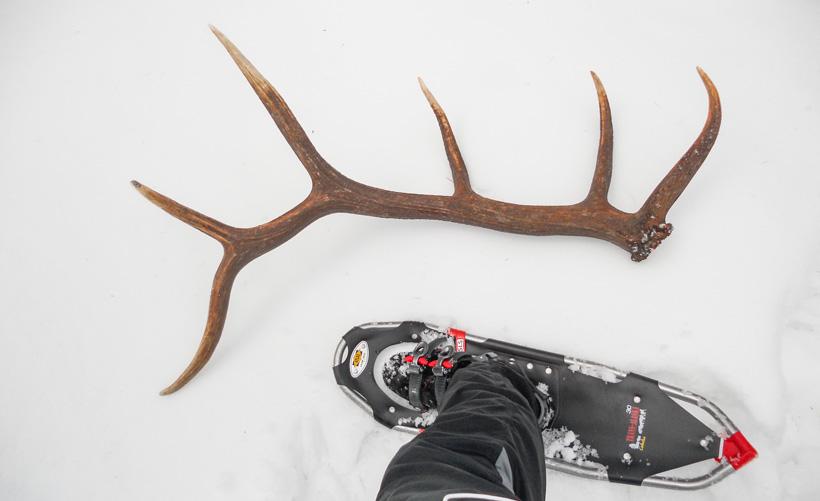
Photo credit: Brady Miller
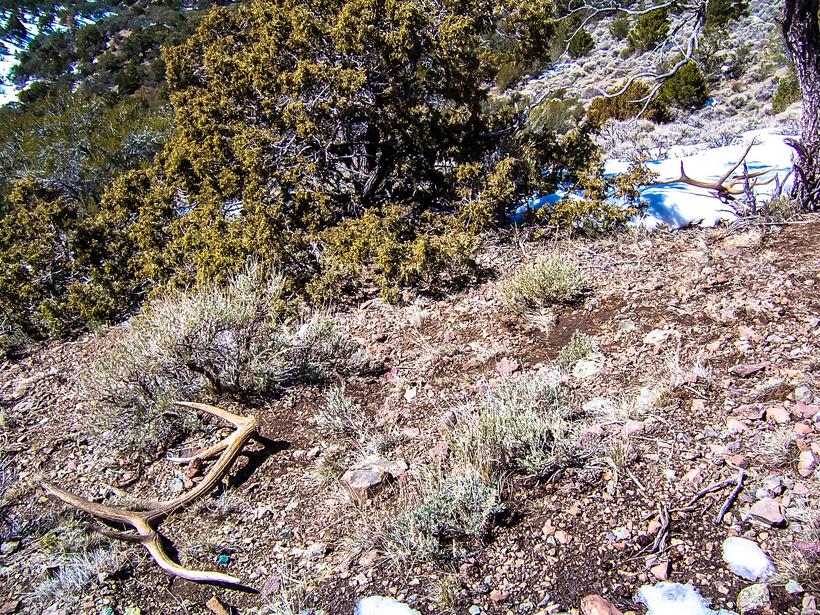
Photo credit: Shane Kreitzer
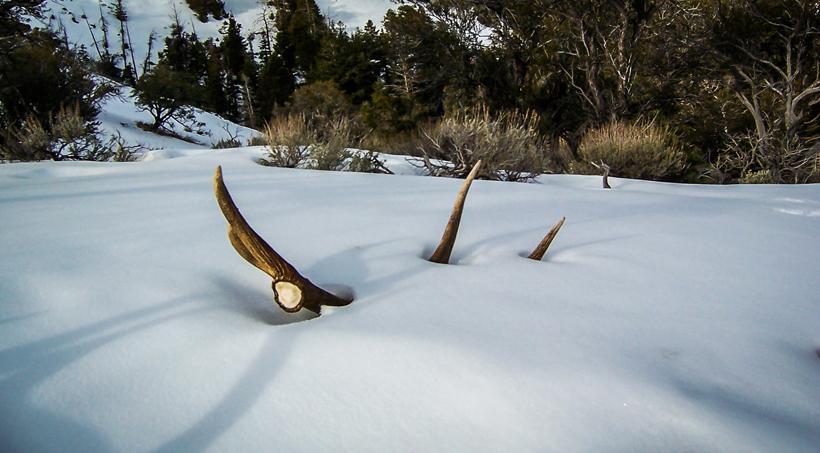
Photo credit: Shane Kreitzer
Every hunter loves finding a good antler, they are amazing, aren’t they? Think about this, antlers are the fastest normal growing tissue known to man, with the only exceptions being tumors and embryos. During the growth process, an elk or deer’s antlers can grow up to an inch or more a day. Here is a little known fact: the pedicle, which is the region of the skull where an antler grows from, contains material that causes the antlers to grow and scientists have actually conducted experiments in which they transplant material from an antler pedicle of a deer, to the forehead of a mouse, resulting in an antler-like growth.
Shed hunting has grown significantly over the past several years. Now just about every hunter I know spends at least a couple days every spring combing the hills hoping to pick up some brown gold and truthfully, despite what my wife says, it makes sense.
Photo credit: Kody Smith
There are several benefits to getting out and doing some shed hunting. First, it is a great way to stay active, burn some calories and maintain or improve your fitness levels. Second, shed hunting is a great way to scout for the upcoming fall hunts. Turning up a big buck or bull shed can provide critical information into where you should focus your summer scouting efforts. Finding sheds can also give you inside information into the future potential of any given unit or location. Third, it is a big help if you happen to need some new hunting gear, or a way to cover your taxidermy costs from the previous year. Shed antlers are being sold at a $/per lb rate that is likely as high as I can remember. Finally, shed hunting is just plain fun. If you are just getting started, hopefully these are some tips here that can help. If you are a seasoned shed hunter, hopefully this will help us remember that we also have ethical responsibilities to uphold even when shed hunting.
Antler shedding is due to dropping testosterone levels. When this occurs, a layer of cells, called the osteoclast, will cause the base to weaken by absorbing calcium from the antlers. Eventually the antlers will drop off or may be knocked off while raking, sparring, or even while running or walking. Individual animals shed at different times, as can each individual antler. I’ve observed a giant bull packing one antler almost a mile away from where the first was shed. Also knowledgeable shed hunters generally share the opinion that the larger mature animals are among the earliest to shed, although that is not always the case.
Photo credit: Shane Kreitzer
Mule deer and even white-tailed deer can shed anytime between late December and into April or May. Elk typically shed during the month of March with a few smaller bulls carrying antlers into April or early May. Living in Utah, I have only ever picked up a handful of moose paddles, but from my understanding, they typically shed between December and March.
Unfortunately, bucks and bulls shed and many hunters take to the field to gather antlers during the worst time of the year for the animals. Due to cold and wet conditions, wildlife are extremely vulnerable this time of year. As shed hunters, there are some general guidelines we can and should follow to alleviate potential impacts. Many roads and trails across the West have seasonal closures to protect wildlife during this critical time period. Obeying those laws is not some arbitrary guideline, I genuinely believe that these laws are trying to protect wildlife and doing so will make a difference in our herds in the long run. Do not take motorized vehicles off designated roads and trails.
During this time of year habitat conditions are saturated and off road travel will destroy habitat and leave rutting for many years to come. It also has the potential to bump wintering wildlife causing them to utilize already depleted resources.
It should go without saying, but the best way to pick up a set of sheds from a buck or bull that you have observed is to leave that animal alone, only watching from a distance, until they shed and have moved off. Modern optics has given us the ability to watch wildlife from great distances — use them and you will be much more likely to pick up those sheds later and the animal will be better off for it.
Do not chase or harass an animal in hopes of getting a shed to drop, that includes allowing a pet to chase them. It does not work, it is illegal, and it is just not the right thing to do. In recent years, trail cameras seem to be flooding the market and have gone from what was primarily a summer scouting tool to a year round hobby. If trail cameras are utilized to capture wintering wildlife photos, I would suggest that measures be taken to avoid excessive stress to wildlife.
The more often we invoke stress by bumping animals the less likely they are to successfully survive and thrive the following spring and summer. We have all probably heard that we should not feed wintering wildlife, and I would maintain that sentiment in using feed to attract bucks or bulls in an attempt to pick up sheds. Feeding hay or something else has the potential to congregate wildlife, which in turn can increase the spread of disease, attract predators, and ultimately can kill deer as their digestive systems may not be able to adapt.
Finally, shed hunting has been such a hot button issue recently that several states have passed laws and regulations that specifically address shed hunting. Currently, those laws are relatively simple and we are largely able to collect sheds without too many over extending guidelines. My hope is that individually we think about that and act accordingly in order to maintain our opportunity to shed hunt.
A shed antler gathering ethics course must be completed online if you want to shed hunt between Feb. 1 and April 15. If you have children who are 17 years of age or younger, and you have completed the course, your children do not need to complete it. Once the course is completed you must print and sign the certificate and have it with you while shed hunting. Outside of those dates no certificate is required. Many of the state owned wildlife management areas are closed in the winter and spring to protect wildlife. Review open road/trail access with local USFS and BLM offices. Only naturally shed antlers can be picked up. Antlers attached to a skull or “deadhead” cannot be collected and info concerning location should be turned into the UDWR. Review open road/trail access with local USFS, BLM and State offices and do not operate motorized vehicles outside of open routes.
Review open road/trail access with local USFS, BLM, and state offices. The Game and Fish Department cautions all shed hunters who use OHVs to always stay on roads and trails when shed hunting. Only naturally shed antlers can be picked up. Antlers attached to a skull or “deadhead” cannot be collected and info concerning location should be turned into the Arizona Game and Fish.
Review open road/trail access with local USFS, BLM and state offices.
Currently, shed antlers can be picked up with no required permit or season, but check local regulations before heading out. It is unlawful to possess the head, horns or antlers of any big-game species found in the field without a receipt from NMDGF so contact New Mexico Game and Fish if you find a “deadhead”. Stay on open trail and roads only, check local USFS, BLM state travel regulations.
Permits to shed are not currently required in Colorado and there is no dates generally associated with when you can and cannot shed hunt, but where antler shed collecting is popular there are two regulations in place to prevent disturbance of animals on public lands in big game management Units 25, 26, 35, 36, 43, 44, 444, 47, 471, 54, 55, 551, 66 and 67. Collection of shed antlers is prohibited on public lands within those units from Jan. 1 through March 14. From March 15 through May 15, shed antler collection is prohibited from legal sunset until 10 a.m. Collectors should consult sunset tables. You should also review open trails and road access with local USFS, BLM, and state agencies.
Shed antler gathering is prohibited on most public lands west of the Continental Divide between Jan. 1 and Apr. 30. Public lands in the Great Divide Basin are excluded from the regulation. Public lands include federal lands and lands owned or administered by the Wyoming Game and Fish Commission. The regulation will not affect most winter ranges in Teton County, which are already off limits to antler gathering from December through April. Also review open trails and road access with local USFS, BLM and State agencies before going shed hunting.
You do not need a license, and the only restrictions are on access and travel. Shed hunters must secure permission to cross or look for antlers on private land, and they must abide by vehicle restrictions on federal and state public lands
No specific shed hunting laws, except that bighorn sheep deadheads cannot be picked up. State owned Montana Wildlife Management Area’s generally open at noon on May 15 or June 1 to shed antler hunting. Check current local BLM and USFS regulations to see if season stipulations apply. Also, review open trails and road access before heading out.
Several Oregon Department of Fish and Wildlife managed wildlife areas and Travel Management Areas are closed to protect big game winter range and shed hunting is prohibited. See pages 98-100 of the Oregon Big Game Regulations for details. See local USFS and BLM guidelines for potential stipulations before going.
No permits or seasonal restrictions that I am aware of, but checking with local Game and Fish, and Federal agencies is a good idea before heading out.
Like hunting, scouting is going to be the key to picking up more shed antlers and knowing where to look will hopefully save some time. Deer and Elk are typically “edge” animals. Even in the winter, they spend significant amounts of time on the edges of feeding, bedding, and escape cover/terrain. Winter weather conditions also play a big part in where you are likely to find bucks and bulls. Deep snow and cold temperatures will generally push animals onto melted off south facing slopes and windswept ridge lines. On a light year, like we are experiencing here in southern Utah now, bucks and bulls can be from low elevation sage and grassland flats to the aspen covered mountain tops, but habitat requirements are generally the same, they like edge habitats.
The classic wintering habitat description for a bull elk is a rough rocky canyon with large south facing slopes and an intermixed vegetation composition of mature mountain mahogany, pinyon juniper and/or oak stands with open grassy/sage covered feeding areas nearby. Bulls generally bed in thick stands of mahogany or pinyon juniper along ridgelines and feed off into more open terrain where grass is readily available. They love that space on the ridgeline, the edge and just below the rim of a canyon. I have also regularly observed bachelor herds of bulls bedded in the snow just out of the canyon bottom on the north facing slopes. Burn scars are great places to look. In drier climates snow is not likely to congregate bulls, but edge habitats are still great places to start.
Wintering mule deer habitats are similar, but it seems that they often winter at lower elevations, although I have seen a couple big bucks spend all winter in snow up to their bellies. Rolling sage and grassland hills with intermixed pinyon and juniper stands are good. South facing slopes comprised of oak, pinyon and juniper can be good too. Public lands located adjacent agricultural lands have also produced in the past. Again, burn scars can be good since new growth greens up quickly.
Slow down, the most successful shed hunters I know are methodical in dissecting an area. Typically, start by thoroughly glassing the area from a good vantage point. A good set of binoculars mounted on a tripod are highly recommended. I also always pack a spotting scope. It has definitely saved me miles of hiking. Afterward, if you have the patience, gridding the hillside on foot can be productive. In doing so, take the time to look in every direction around you.
If you are not occasionally taking a fall because you were not watching your step, you probably are not looking hard enough. A GPS with the track feature turned on can be helpful. It will allow you to determine the width of your grid and the areas you have already covered. Marking the location of a shed you have found can also help you determine where the other side is most likely to be or where you might find that animal during the upcoming hunting season. Developing a search image is key. The texture, color, or tip of a tine might be all you will see and it might sound odd, but the guys I know that are the most productive are guys that always seem to have an antler kicking around in their house or office and are out watching wildlife. Finally, have fun. It is a great time of year to be out.